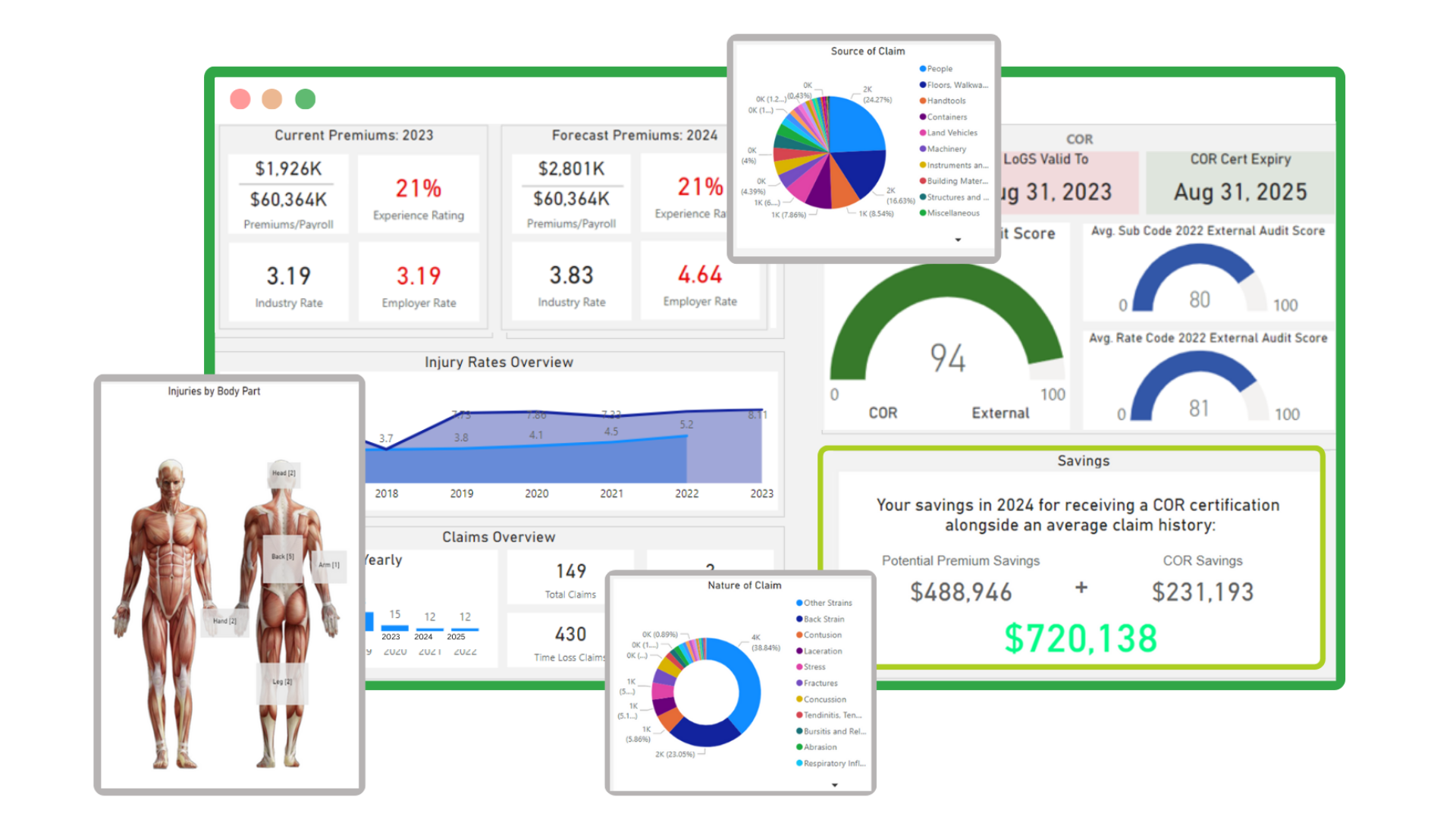Should Dehydrated Employees be Allowed to Perform High-Hazard Jobs?
Author: Tony Mudd, CSP Published: 3/28/2022 Time: 3 Minutes
Decreased hydration has been shown to result in significant health issues, causing critical damage to the body and its functions. With the human body being comprised of 60% water, hydration is more than a recommendation, it's a necessity. In the workplace, proper hydration should go as far as being considered a form of personal protection. It should be something that is at the front of every safety conversation before, during, and even after the summer months. What many employers may not understand, is that dehydration is a safety hazard.
As a person who has both seen and suffered the effects of dehydration, feeling lighted-headed, weak, and slow to react, I know all too well just how much this inhibits a person's functioning. Dehydration is something that workers shouldn’t experience in the workplace; however, it does happen. One way to recognize that dehydration is happening is to notice that feeling of the body running on empty and being unable to carry out its normal functions. When someone loses fluids, they must then be replaced as soon as possible, to avoid an imbalance of salt and sugar in the body. This type of response in the body not only affects performance, but it threatens worker safety. This experience can cause severe heat stress that, if not immediately addressed, could lead to headaches, light-headedness, loss of consciousness, or other severe and potentially fatal complications.
It has been said that the average adult has about 2.6 million sweat glands, which activate when the brain determines that the body must be cooled down. This takes a real toll on those whose jobs involve physical labor. Estimates suggest that workers who wear heavy protective clothing can lose as much as 2.25 liters of fluid every hour. To replace it, NIOSH and the Centers for Disease Control recommend that moderately active workers drink one cup of water every 15 minutes, whether they feel thirsty or not.
According to the journal article, Responses of the Human Brain to Mild Dehydration and Rehydration Explored In Vivo by 1H-MR Imaging and Spectroscopy, dehydration decreases brain-tissue fluid, which can result in changes to brain volume. This could be a reason why dehydration leads to lower mental performance. As stated in the article, Heat Stress, and the Dangers of On-The-Job Dehydration, a one percent drop in hydration is enough to cause a 12 percent drop in worker productivity. At three to four percent dehydration, productivity can plunge by an astounding 25-50 percent.
Studies show that it only takes 2 percent dehydration to cause impaired performance in tasks that require attention, motor, and memory skills. This type of severe dehydration can also result in impaired cognitive abilities.
For workers operating heavy machinery, this kind of impaired performance is both risky and hazardous in the workplace. Dehydration continues to prove itself as such a significant factor in the workplace, as recent studies have found that participants committed a significantly higher number of driving errors when they were dehydrated. What this data also revealed was that these numbers were just as significant as individuals who completed similar tests while at the legal blood alcohol content limit. This means that being dehydrated in the workplace is just as dangerous as working under the influence.
According to the article, How Heat Stress Affects Performance, a performance study was conducted by the National Aeronautics and Space Administration (NASA) using telegraph key operators which showed that in temperatures of 80 degrees Fahrenheit, the operator will make five errors an hour and 19 mistakes after three hours. At 90 degrees Fahrenheit, the operators made nine mistakes per hour and 27 mistakes after three hours. At 95 degrees Fahrenheit, the mistakes went to 60 in one hour and the mistakes to 138 in three hours. Though errors made by telegraph key operators may not be critical, this same hot environment will produce a similar number of errors in workers, regardless of the task being completed. These numbers are beyond shocking.
Being unable to properly assess workplace hazards can be a major source of incidents. As a result, dehydration is something worth assessing in the workplace, as it poses a grave concern for worker safety performance and overall health.
As a Safety Professional, I always advise employers to ensure that all workers are properly hydrated. Usually, this is done by developing a worker hydration program that helps assess, track, and replenish water during the peak months of the year or when intense work arises. Dehydration is a safety hazard, but with the right tools, awareness training, and available water options it is also 100% preventable.
I hope you enjoyed this article.
Stay Safe & Stay Healthy!
#SensoriSafety #VisionTraining #dehydrating #ForkliftOperator #CraneOperator #manufacturing #construction #hydration #workersafety
Noted Sources
Adan A. Cognitive performance and dehydration. J Am Coll Nutr. 2012 Apr;31(2):71-8. DOI: 10.1080/07315724.2012.10720011. PMID: 22855911. https://pubmed.ncbi.nlm.nih.gov/22855911/
BIC Magazine. (2021, July 12). How does dehydration impact workplace safety? Retrieved February 19, 2022, from https://www.bicmagazine.com/departments/hse/how-does-dehydration-impact-workplace-safety/
Biller, A., Reuter, M., Patenaude, B., Homola, G. A., Breuer, F., Bendszus, M., & Bartsch, A. J. (2015). Responses of the Human Brain to Mild Dehydration and Rehydration Explored In Vivo by 1H-MR Imaging and Spectroscopy. AJNR. American journal of neuroradiology, 36(12), 2277–2284. https://doi.org/10.3174/ajnr.A4508
How Heat Stress Affects Performance -. (2010, May 1). Occupational Health & Safety. Retrieved February 19, 2022, from http://www3.ohsonline.com/Articles/2010/05/01/How-Heat-Stress-Affects-Performance.aspx
M. (2018, April 5). Heat Stress, and the Dangers of On-The-Job Dehydration. GoSafe. Retrieved February 19, 2022, from https://blog.gosafe.com/heat-stress-and-the-dangers-of-on-the-job-dehydration
Technologies, B. (2018, May 29). 4 Ways Dehydration Affects Your Brain - bsxtechnologies. Medium. Retrieved February 19, 2022, from https://medium.com/bsxtechnologies/4-ways-dehydration-affects-your-brain-e4042a6cb6b1











